A Design Lover’s Guide to New Zealand
New Zealand’s luxury lodges have gained a reputation for being architectural marvels, with sprawling mansions built from locally sourced materials and often located on the margins of alpine lakes with stunning views. While many visitors go to New Zealand for the spine of mountain ranges, the vineyards, and the sounds, including Marlborough and Milford, there is a distinct architecture scene that has started to emerge.
Architect Nat Cheshire, whose work includes The Landing, a luxury retreat and vineyard in the country’s Bay of Islands, says there are a number of styles emerging in the country, particularly in the design aesthetics of the luxury retreat. “One strand is a kind of ‘organic minimalism’ or ‘organic reductivism,’” he says, “which proposes a spatial structure of discipline and clarity, leavened with the warmth and integrity of real material, including boulders pulled from the ground, plasters mixed with straw or shell and sand, precisely proportioned but roughly finished timbers and concrete cast into rough sawn forms.”
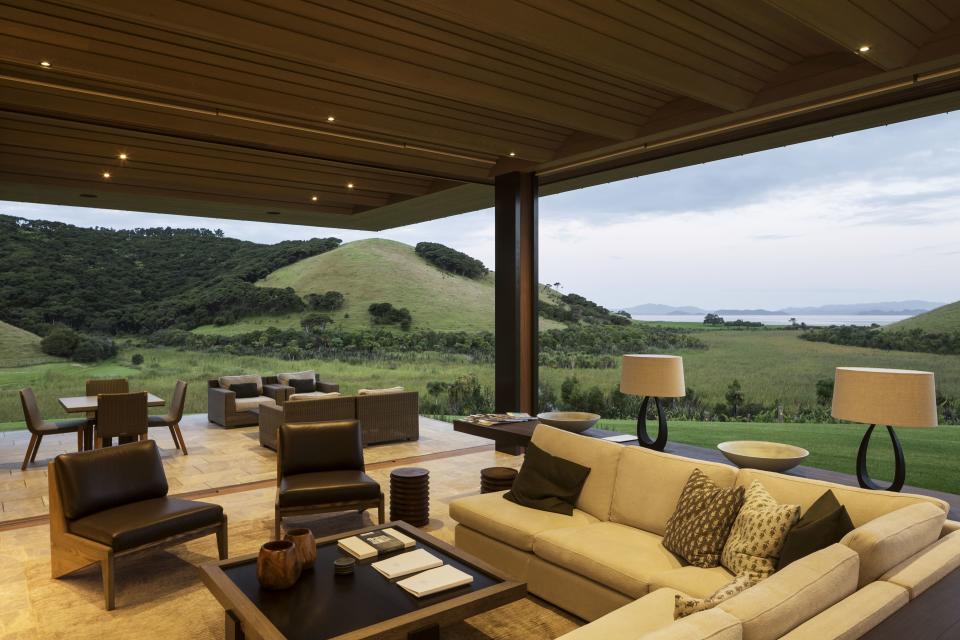
Cheshire adds that this architectural philosophy generates a luxury of space, volume, and atmosphere, rather than of rarity or ostentation. “At its best, I think, it digs its toes into the soil and uses mass and the relationship between built form and landscape to assert its right to belong and stay in that landscape. Ours is a built history of light, stick-based construction. I am most exhilarated when we are confident enough to contradict that, and to do so beautifully,” he observes.
In the world of stand-alone houses and lodges, it would seem that New Zealand has a huge and ever-more-sophisticated sensitivity to land, material, and the relationship between the two. In the city, Cheshire likes to think that New Zealand has discovered how to transform cities in a way that is fluid, organic, fine-grained, as concerned with “software” as with “hardware,” and delivering a very carefully weighted, informal kind of excellence.
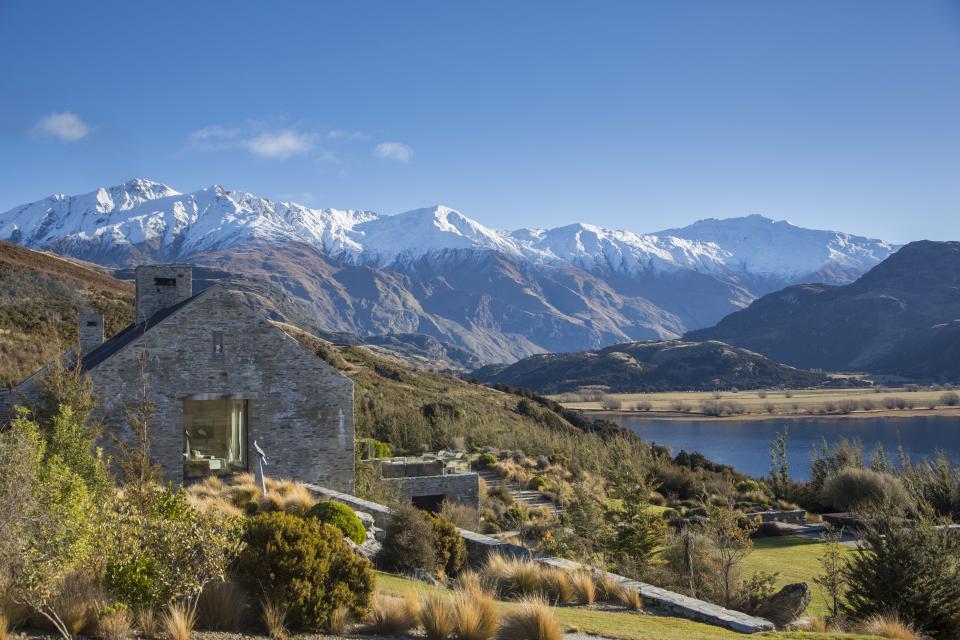
In this sense, the country’s architectural endeavor now reaches far beyond building and urbanism, up into leasing and development strategy, and right down to the menus and aprons and websites and teaspoons of the bistros. The architecture has turned into an act of holistic place- and experience-making.
Architect Andrew Patterson, who represented New Zealand at the New Breed Architectural Exhibition in Sydney in 1988, says, “We are a culture with a deep affinity to landscape, and this stems from the contribution Māori culture makes to our natural physic. Māori culture’s creation story believes that we are all descended from the earth and sky. Some natural features such as rivers and mountains even have legal person status in New Zealand,” he tells AD.
In that sense, the design stems from connecting to the beauty of the local environment. “We believe if a building feels like it belongs in a place, then its occupants will feel a sense of comfort and belonging there too. For us this is about using natural and local materials that link into the environment rather than opulent materials,” he adds.
WHERE TO STAY
Cape Kidnappers, Hawke’s Bay
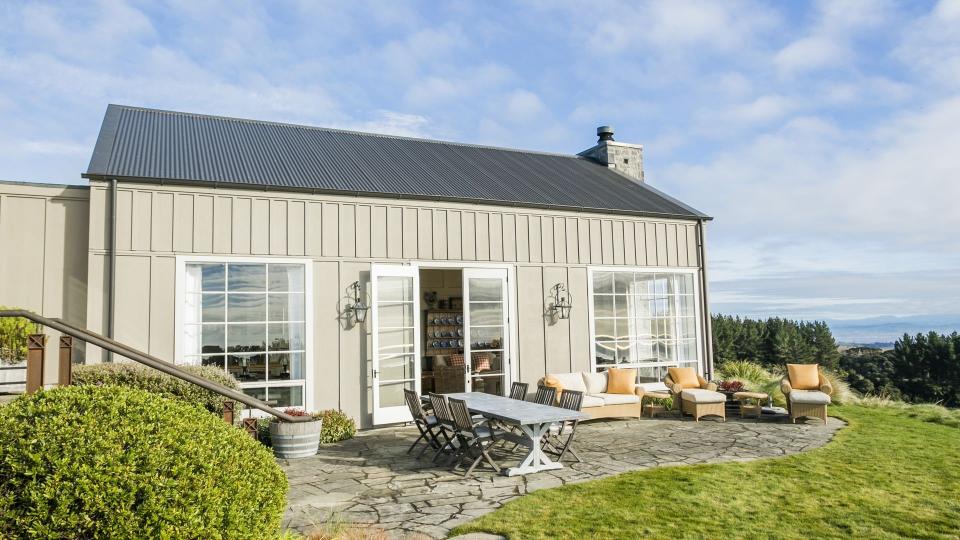
There were several Māori tribes who lived in this particularly rugged and undulating region. Today, the area is considered New Zealand’s food bowl, with several producers cultivating everything from olive oil to honey. The region is also home to one of the finest luxury retreats in the world: The Farm at Cape Kidnappers, owned by Robertson Lodges, is a slice of paradise with a signature golf course designed by Tom Doak. The airy, rustic-style rooms even feature farm implements like tractor seats on walls, with interiors originally done by Linda Bedell of Aspen, Colorado.
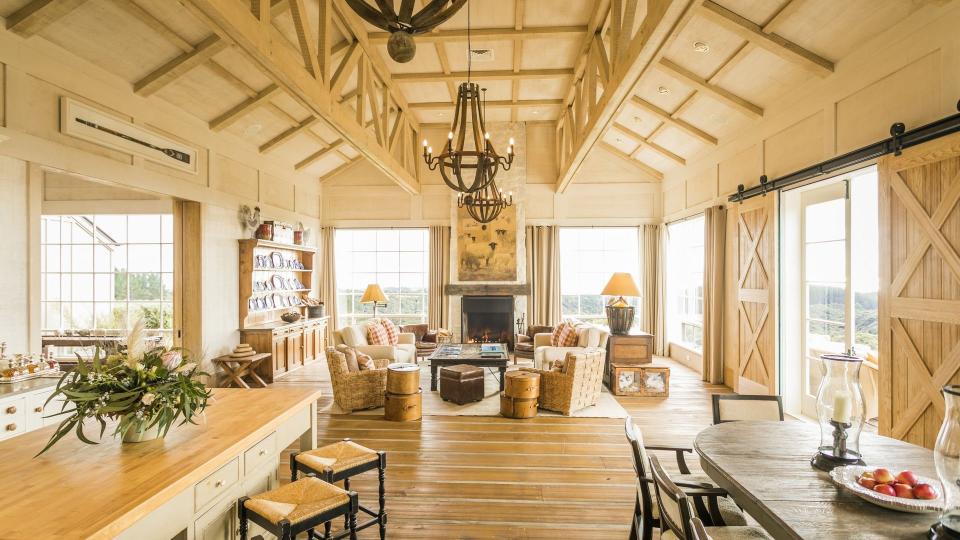
What is particularly stunning about this property is that it also doubles as a nature preserve, with an endless intersection of earth and sky. Guests can delight in a Kiwi Discovery Walk, and the lodge is home to the largest mainland colony of the large seabird, the gannet. Also, sheep as far as the eye can see. robertsonlodges.com
Marlborough Lodge, Blenheim
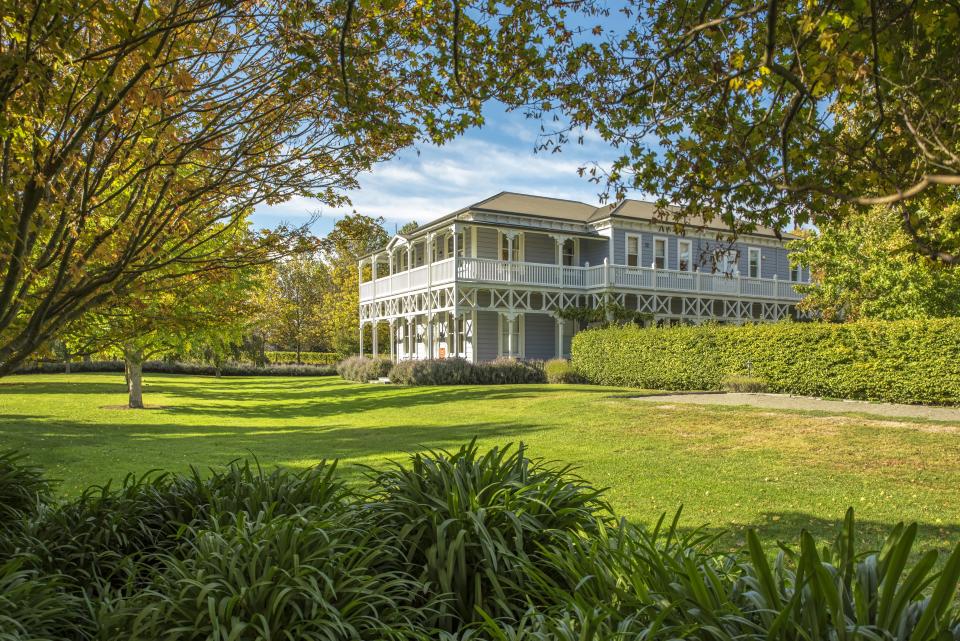
Situated on the top of South Island, the gorgeous province of Marlborough is famous for its wines—notably Sauvignon Blanc—and boasts over 110 vineyards. The hippest place to stay in this area is Marlborough Lodge, a ten-room boutique hotel that was originally a Sisters of Mercy convent that was carefully brought to the area, piece by piece. The rooms were designed by Auckland-based Peter Lloyd and overseen by the enterprising co-owner Angela Dillon; the 1913 chapel on the site was recently converted into a spa. The beautifully appointed rooms feature the history of the convent, natural tones that blend with the original Rimu wood, and exposed beams made from 100-year-old kauri wood. marlboroughlodge.co.nz
Mahu Whenua, Wanaka
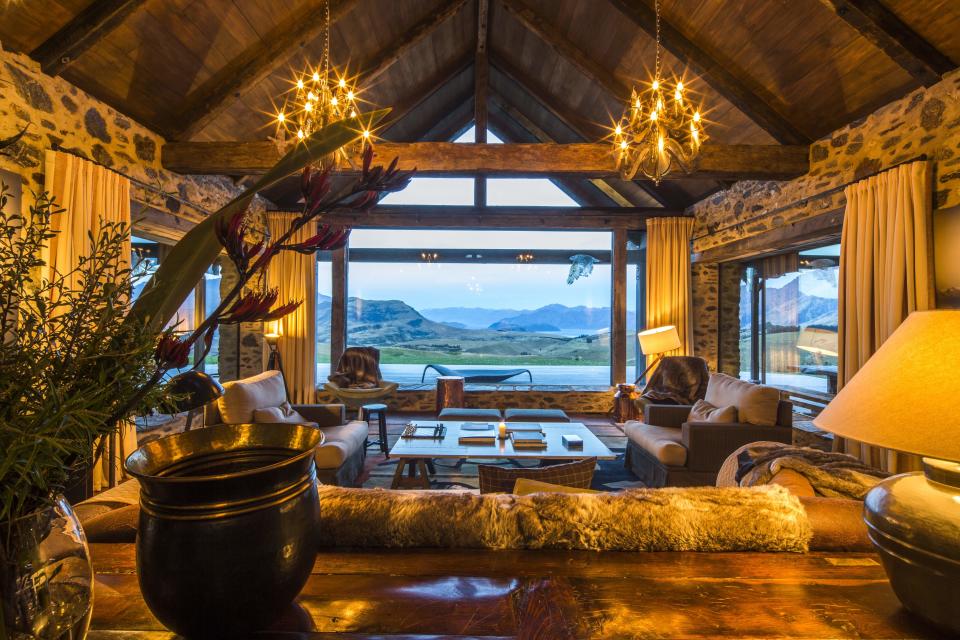
It is possible that no other property in the country offers such a complete immersion in nature as this 136,000-acre ridgeline homestead and eco-sanctuary. Wanaka, despite being a popular ski and summer resort in the Otago region of South Island, is well known for its natural beauty: The Crown mountain range that forms the backdrop of this ski town is spiky and rugged. It is about an hour’s drive from the more popular Queenstown, where much of The Lord of the Rings was filmed. It is here on several thousand acres of rugged slopes studded with spruce, tussock, and manuka trees that South African record producer Robert “Mutt” Lange built a private eco sanctuary, managed by MajorDomo concierge services. The lodge recently opened its doors to guests, with four suites and two cottages overlooking Wanaka's valleys and peaks. The largest private sanctuary of its kind in New Zealand (90% of the land has been donated to a national trust) has so much going for it, apart from the sheer gorgeousness of its interiors. Over one million trees have been planted here, and some endangered wildlife, such as the Weka, thrive. mahuwhenua.co.nz
Hulbert House, Queenstown
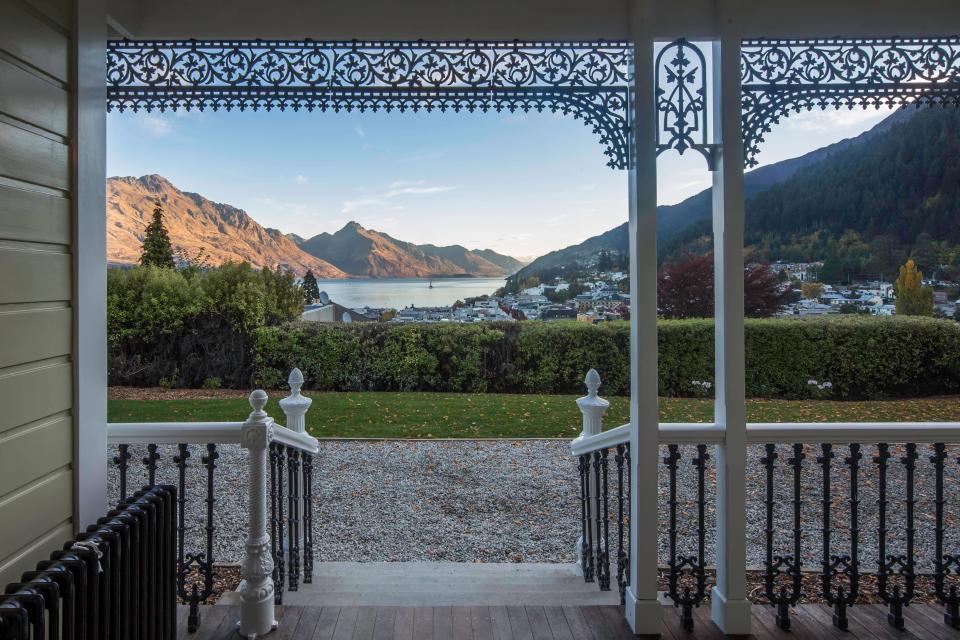
This beautifully restored Victorian villa, dating back to 1888, is perched elegantly in the middle of a hill overlooking Lake Wakatipu. Each of its six suites is named after an individual in the history of homesteads, including the Firth Suite (named after Horatio Nelson Firth, a gold trader who once resided in this house). With interiors done by Neil McLachlan, the house is on New Zealand’s Historic Places register, with busy, detailed rich wallpapers that seem almost iridescent at times and an unforgettable custom-milled carpet commissioned in the country with design taken from willow-patterned china. hulberthouse.co.nz
WHAT TO DO
Art Deco Tour of Napier
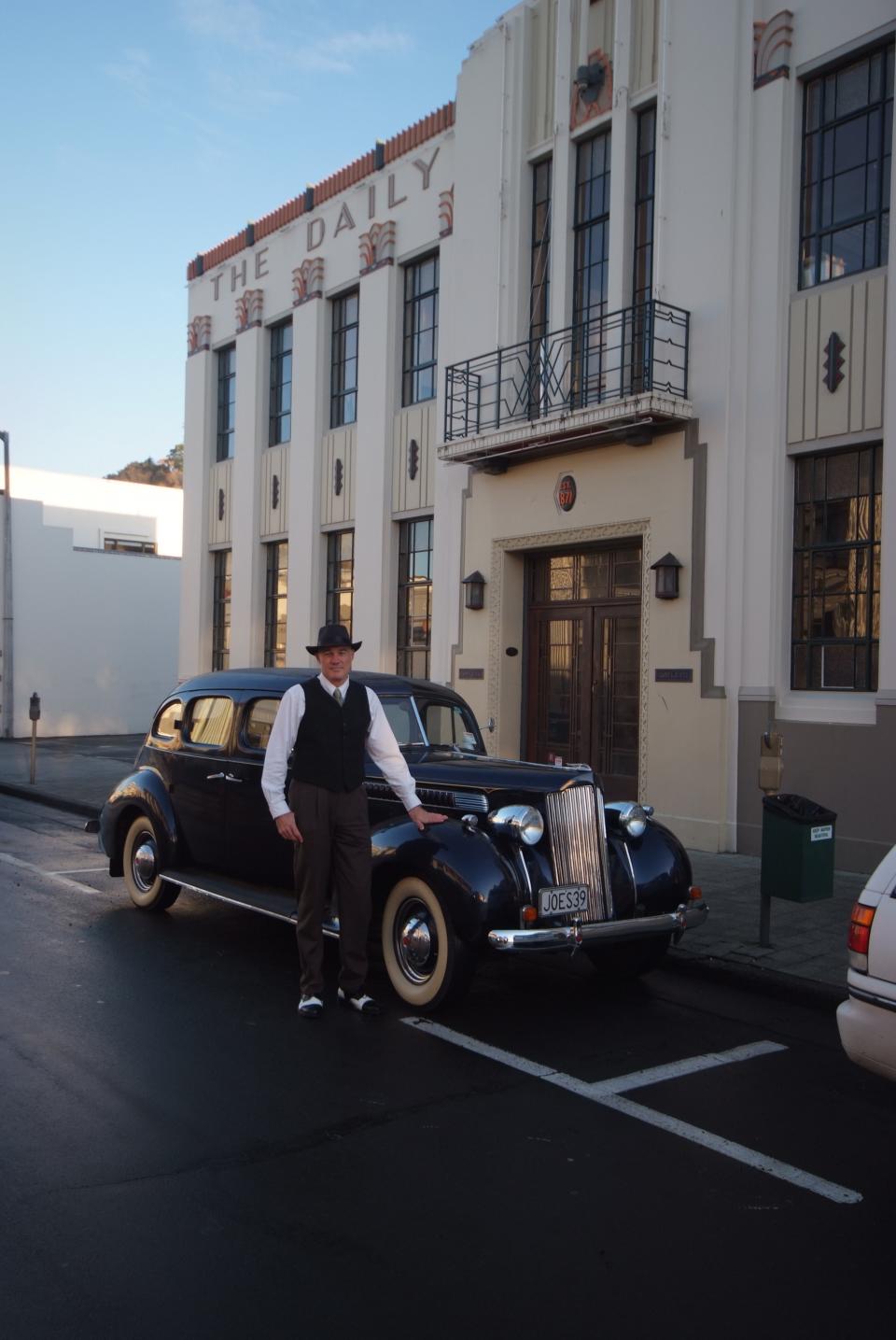
Napier, one of the most interesting architecturally rich cities in New Zealand, is in Hawke’s Bay on the eastern coast of the North Island. After much of the city was razed in an earthquake in 1931, it was rebuilt; now, each February, visitors come for the Tremains Art Deco Festival, to view its unique constellation of 1930s Art Deco buildings and to celebrate its architectural heritage. Historian Bertie Cocking, who takes you on can’t-miss Art Deco guided tours and shows you detailed views of the various styles of the thirties including Spanish Mission and Stripped Classical, says that some of the best examples of preserved Art Deco heritage include the National Tobacco Company, the Municipal Theater, the Daily Telegraph, and the T&G buildings. “All of these buildings had some sort of renovation or amendment over the years,” he observes, but notes that they retain the same street appearance. Art Deco Guided Tours.
Cruise the Marlborough Sounds
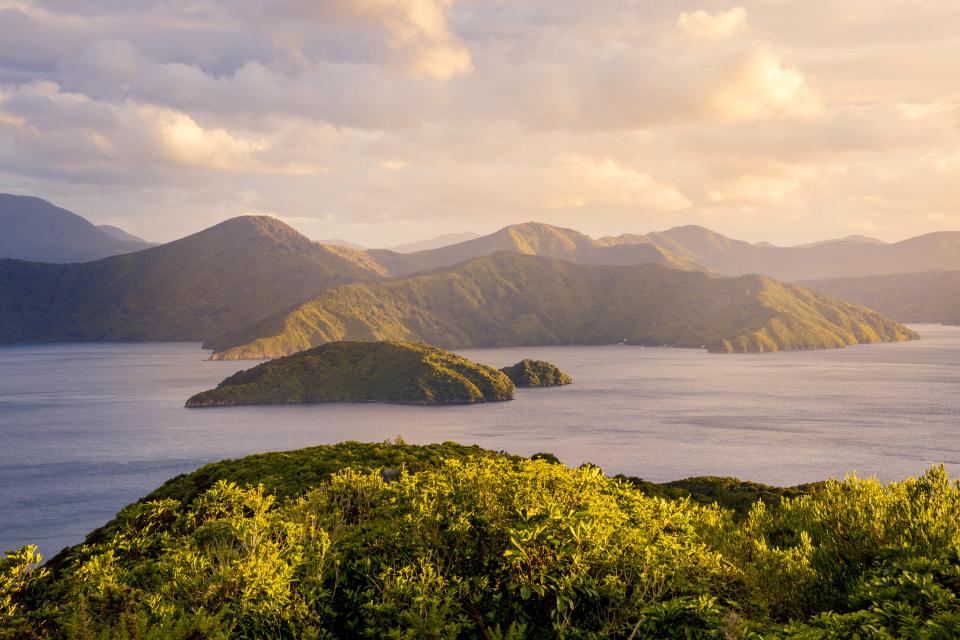
Sunrise Over Marlborough Sounds, New Zealand
Many visitors go to Milford Sound, but the extensive lattice of sea-drowned valleys that form the Marlborough Sounds offer a perspective on New Zealand that few areas in the country can match. They are also steeped in Māori mythology. One of the best ways to experience the density and grandeur of these Sounds is to take a luxury cruise on a boat such as the MV Tarquin, a 65-foot charter with three private cabins that give you the freedom to stay overnight or do day trips. Run by Chris and Sue Godsiff, who established the Marlborough Tour Company, the cruise is a laid-back way to explore some of the harder-to-reach areas in the Sounds, including the local flora-studded Pohuenui Island. tarquincruises.co.nz.

